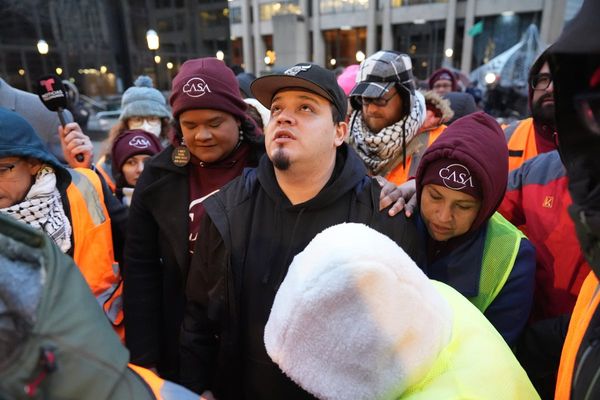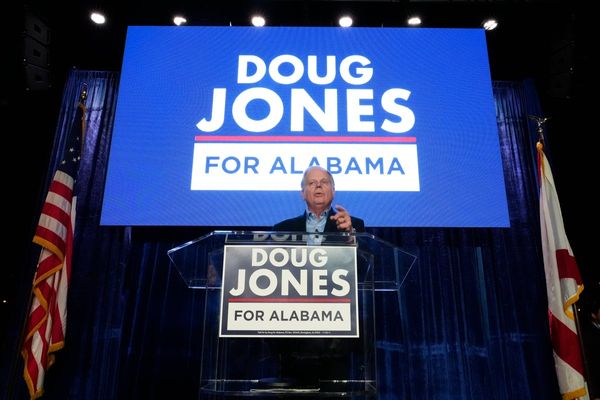
Kim Nachazel had been looking forward to a road trip to Mesa Verde national park in Colorado this week. Her husband had been mesmerized by the park since he read about it in high school, and she’d planned them a full day of adventure – two tours of famous cliff dwellings, a camping spot on BLM land, and even a spot for her pup at a dog-boarding place inside the park grounds.
She knew about the government shutdown, but that didn’t deter her. “I had hope and optimism that this park wouldn’t really be affected,” she says, “and that we would have an amazing day exploring.”
But when she arrived at the gates after driving from Salt Lake City, the parks worker thanked them and told them the park was closed, she says. “We were devastated.”
As US government funding ground to a halt on Wednesday, the sprawling national park system was thrust into limbo. Without a budget agreement, 9,296 of the park agency’s 14,500 employees were expected to be furloughed, according to a contingency plan published by the Department of the Interior. The plan also outlined how parks should stay partially open, leaving some visitors confused about whether they could actually visit or not.
“Park roads, lookouts, trails, and open-air memorials will generally remain accessible to visitors,” the contingency plan read. Operators who run the park’s hotels and other facilities could also stay open. “If a facility or area is locked or secured during non-business hours (buildings, gated parking lots, etc) it should be locked or secured for the duration of the shutdown,” the plan also said.
While the shutdown has shuttered large parts of some national parks, such as Mesa Verde, some popular parks are still trying to function – with a skeleton crew of staff – using fees collected from campgrounds instead of from federally appropriated funds.
However, operations are not continuing as normal. At Yosemite national park, the gates are open– but no one is there to collect park fees – and backcountry permits have to be self-issued by hikers. At Grand Canyon, Death Valley and Sequoia national parks, little to no maintenance will be conducted, parks will not provide regular road or trail condition updates, and will only provide updates on their websites and social media in an emergency. Law enforcement is still working, the national park service says.
Emails and calls the Guardian made to the public information officers at the parks for further clarity went unanswered, with a message about the “lapse in appropriations”.
The hodgepodge situation has park workers and advocates concerned, especially on the heels of an already tough year. “Our national parks are dealing with multiple challenges right now, threatening everything that these places were created to protect,” says Angela Gonzales, with the National Parks Conservation Association, an advocacy organization for national parks. She points out that since January, the National Park Service has lost more than 25% of its permanent staff. “With the government shut down, thousands of park employees are now furloughed, unsure when they’ll see their next paycheck. And with the administration threatening more staff cuts, many fear they may not have a job to return to at all.”
Staying open has its risks as well. James Jones, a veteran who does maintenance in North Carolina’s Blue Ridge Parkway national park, says the park is still recovering from the effects of Hurricane Helene last year. And in a few weeks, visitors will come in droves to see the fall colors.
Jones has been furloughed since the government shut down on 1 October, but he says he is on call and could be brought back for small jobs at a moment’s notice. “They’ve left the park open, which is new – it’s the first time they’ve actually left entire areas of the parkway open, especially like the developed areas like campgrounds and picnic areas,” he says. “I guess the interior secretary wants to try to keep services rolling, to try to make it look like there’s no impact.”
He adds that during past shutdowns, poachers have run wild collecting ginseng, and people have even been injured and had to wait long times for medical attention on the trails – all preventable with the right level of staffing.
The previous shutdown in 2018 lasted 35 days and took a toll on beloved national parks. At Joshua Tree, trees were chopped down. At Sequoia and Kings Canyon national parks, the human waste and trash issues became so problematic that the parks were eventually forced to close.
Kenji Haroutunian, executive director of the nonprofit Friends Of Joshua Tree, a group that supports the national park, points out that every shutdown is different – so it’s hard to predict exactly how this one will play out. “The most disturbing thing is just not being sure of exactly what’s happening, what resources are in place and what protections and infrastructure remain in order to protect the park, and to protect and to serve the public.”
He points out that Joshua Tree, like many parks, sits alongside small towns that rely on income from tourists to survive – and those towns take a hit every time visitors choose not to come because of a shutdown. According to the NPCA, every day this shutdown drags on, the national park system will lose as much as $1m in fee revenue, while gateway communities stand to lose as much as $80m in visitor spending.
After Nachazel and her husband were turned away from Mesa Verde, they drove to Aztec Ruins national monument – only to find a sign at the entrance that the park was also closed “until further notice” and that all tours were cancelled. “We were very let down,” she says.
And with Congress at a deadlock and the shutdown dragging into the weekend, it could be a while before she and others can get back to their adventures again.







